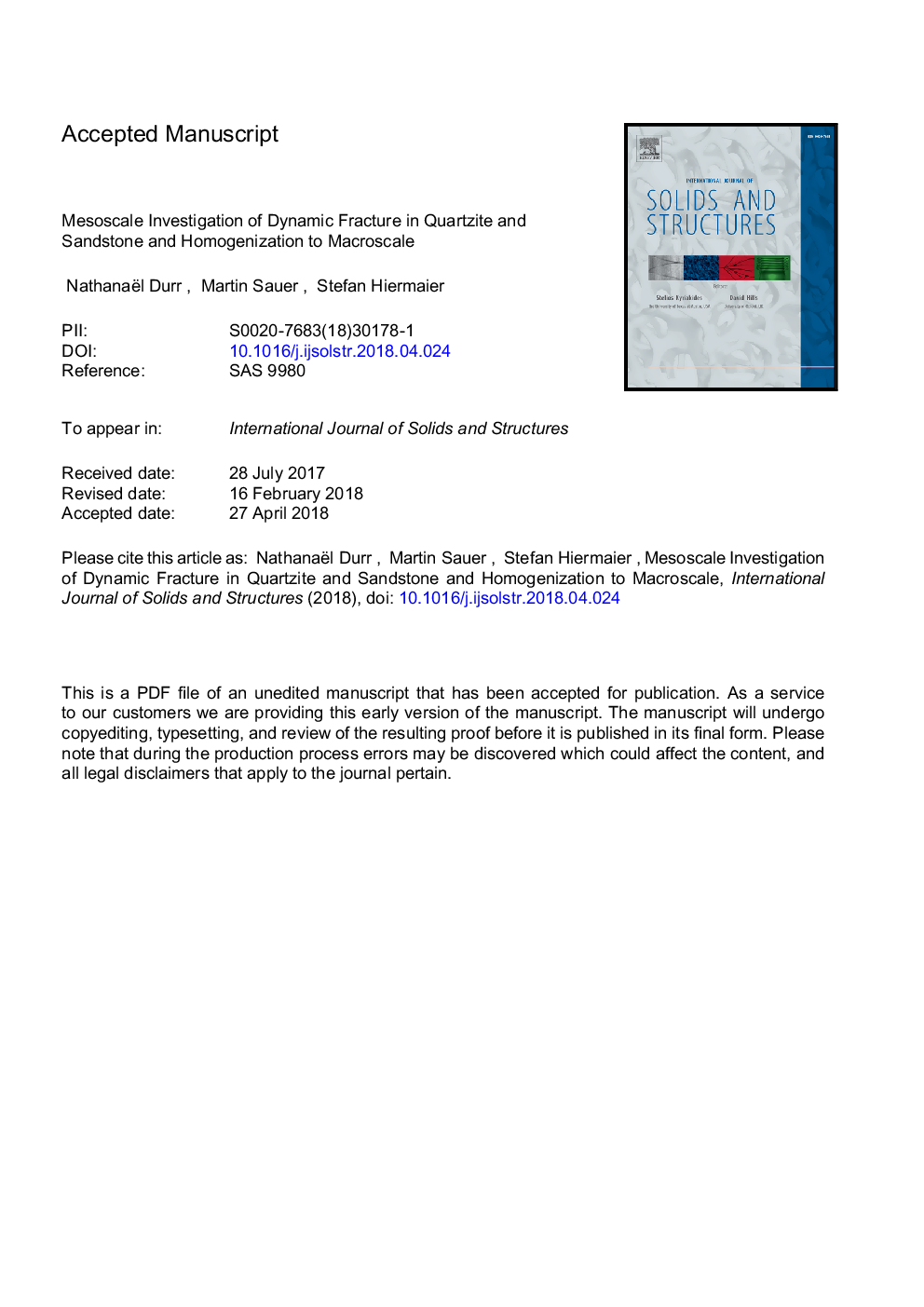| Article ID | Journal | Published Year | Pages | File Type |
|---|---|---|---|---|
| 6748271 | International Journal of Solids and Structures | 2018 | 50 Pages |
Abstract
The work presented here is part of the MEMIN (Multidisciplinary Experimental and Modeling Impact Research Network) project, which is devoted to the experimental and numerical investigation of the effects of meteorite impact on geological materials from laboratory scale to natural scale. In general, high velocity impacts on rock material causes fractures in the target that may lead to spallation of material near surfaces. While spallation effects are of great importance for laboratory scale craters, they are much less significant in natural craters. Therefore, they need to be taken into account when comparing natural craters with laboratory craters, particularly, when scaling laws that provide relationships between laboratory and natural craters shall be developed. This scale bridging requires realistic quantification of spallation effects, which can be done with numerical methods if appropriate material models exist. For this purpose, we investigate dynamic fracture in quartzite and sandstone. We present a new methodology to derive three dimensional macroscale material data from one-dimensional dynamic fracture experiments, namely Hopkinson-Bar experiments in the spallation configuration, using a new mesoscale simulation model. Simulations are conducted with the in-house hydrocode SOPHIA. Mesoscopic material parameters are identified from a parameter study such that simulated macroscopic failure quantities conform to experimentally measured data. The calibrated mesoscale model is then subjected to a set of multiaxial load cases in order to derive macroscopic yield and failure parameters using averaging techniques. The results can be directly used to calibrate macroscale material models for dynamic fracture and will support the predictability of laboratory craters and, in particular, of spallation effects.
Keywords
Related Topics
Physical Sciences and Engineering
Engineering
Civil and Structural Engineering
Authors
Nathanaël Durr, Martin Sauer, Stefan Hiermaier,
